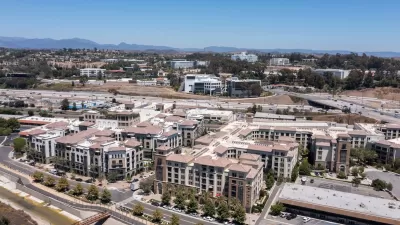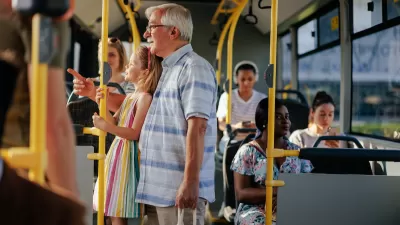New research indicates that improving public health requires targeted investments in more than just pedestrian facilities.

Nikita Amir reports on a recent study of public health outcomes from the MAP Center for Urban Health Solutions at St. Michael's Hospital in Toronto which reveals that "walkability isn’t just restricted to elements of infrastructure—it’s also mediated by racial injustice, food supply, and pollution."
The study's authors evaluated existing research linking physical activity and disease "to understand how a resident’s ability to walk around their neighborhoods is linked to the likelihood of obesity and diabetes," writes Amir. Gillian Booth, a scientist at the MAP Center for Urban Health Solutions at St. Michael’s Hospital in Toronto, Canada, and her co-author Nicholas Howell created a "walkability index" that combined a variety of factors that affect whether residents of an area can safely walk around their neighborhood and access businesses and transit.
The researchers found that public health metrics varied across neighborhoods, and that pedestrian infrastructure (such as sidewalks) alone don't indicate a healthier neighborhood.
"For example, Booth and her co-author learned that in places with higher air pollution or traffic congestion, it wasn’t as beneficial to be able to stroll around as in cleaner, quieter neighborhoods. In the more polluted areas, residents had a higher risk of illnesses such as heart disease or dementia. In essence, any gains made by being able to walk around the neighborhood were washed away by the increased concentration of fuel emissions in the air."
Additionally, "Factors like food apartheids with a lack of healthy eating options or access to green spaces can also be traced to systemic social and racial inequities. Many low-income communities live in places that have been intentionally designed without walkability or abundant resources like parks and grocery stores in mind." The study's authors acknowledge the limitations of their research, which often didn't include socioeconomic factors.
The study could play a role in figuring out how cities can design healthy, sustainable infrastructure that addresses public health from all angles including walkability, air quality, stormwater management, open space, and transportation.
FULL STORY: Walkability won't solve neighborhood health inequities

Study: Maui’s Plan to Convert Vacation Rentals to Long-Term Housing Could Cause Nearly $1 Billion Economic Loss
The plan would reduce visitor accommodation by 25,% resulting in 1,900 jobs lost.

North Texas Transit Leaders Tout Benefits of TOD for Growing Region
At a summit focused on transit-oriented development, policymakers discussed how North Texas’ expanded light rail system can serve as a tool for economic growth.

Alabama: Trump Terminates Settlements for Black Communities Harmed By Raw Sewage
Trump deemed the landmark civil rights agreement “illegal DEI and environmental justice policy.”

How Community Science Connects People, Parks, and Biodiversity
Community science engages people of all backgrounds in documenting local biodiversity, strengthening connections to nature, and contributing to global efforts like the City Nature Challenge to build a more inclusive and resilient future.

Alabama: Trump Terminates Settlements for Black Communities Harmed By Raw Sewage
Trump deemed the landmark civil rights agreement “illegal DEI and environmental justice policy.”

Dear Tesla Driver: “It’s not You, It’s Him.”
Amidst a booming bumper sticker industry, one writer offers solace to those asking, “Does this car make me look fascist?”
Urban Design for Planners 1: Software Tools
This six-course series explores essential urban design concepts using open source software and equips planners with the tools they need to participate fully in the urban design process.
Planning for Universal Design
Learn the tools for implementing Universal Design in planning regulations.
City of Santa Clarita
Ascent Environmental
Institute for Housing and Urban Development Studies (IHS)
City of Grandview
Harvard GSD Executive Education
Toledo-Lucas County Plan Commissions
Salt Lake City
NYU Wagner Graduate School of Public Service





























